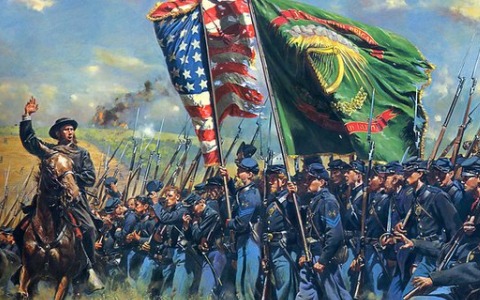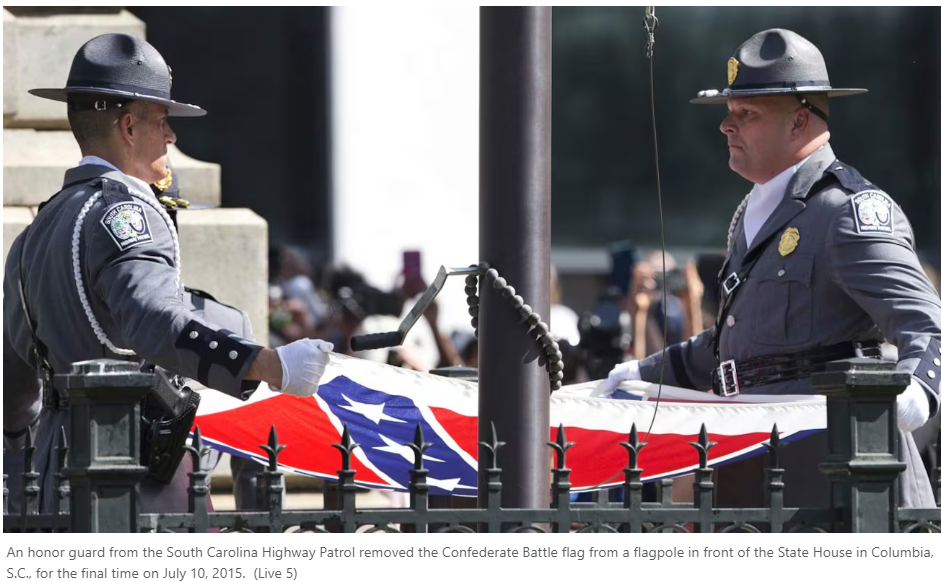It was exactly five months before the deadly battle at Gettysburg, the scene of inestimable carnage, and it was St. Patrick’s Day in the little town of Falmouth, Va., which today just off Interstate 95 on the way to Richmond.
Troops of the Irish Brigade were camped there, thousands of them it seemed, and it was time for a party to break the tiring days of either fighting or killing time.
Gen. Thomas Francis Meagher, born near Waterford, Ireland, led the troops of the 69th Brigade of New York, known as the Irish Brigade, one of the most colorful units among all those in the Army of the Potomac. As one writer said, the Brigade reflected the characteristics of Meagher himself. While they were ferocious in battle, the men could be rather rambunctious between campaigns.
Meagher had grown up as an Irish revolutionary, edited an Irish Nationalist newspaper, and had even been an attorney before the conflict began. He had been in the Battle of First Manassas with his men when the brigade was composed of three regiments from New York, the 28th from Massachusetts and the 116th from Pennsylvania.
Two interesting accounts from young soldiers have come down from St. Patrick’s Day of that year, one being from Charles E. Goddard in Company K to his mother.
Goddard, who came from the small town of Winona, Minn., would ultimately be wounded at Gettysburg, but on this March day, the battle to come was far from his mind. Co. K had fought all over Virginia, including a battle at Vienna in September of 1862.
There had been notices sent out or posted of the coming St. Patrick’s Day celebration, which included a Military Mass (an apparent nod to the saintly nature of the day’s namesake) and then a horse race with other festivities planned.
The crowd that was said to be over 20,0000 gathered at the Brigade’s Falmouth headquarters and included Gen. Joseph Hooker, who was Commander of the Army of the Potomac.
In the letter, the 16-year-old Goddard reports that he’s been on light duty for a few days as a result of a sprained leg received playing ball. He then describes the St. Patrick’s Day festivities, writing that “The Irish Brigade celebrated St. Patrick’s day with great pomp[.] General Meagher superintending the sports[.] First on the list came a horse race, the officers only being allowed on the course…about a mile long with four places to jump over, one being on the first second third and fourth quarter of the mile.” He tells of the number of riders unhorsed after the first part of the race and that General Meagher’s horse won.
“Then came the foot race and a number of other things that I did not stop to see for the officers were all getting drunk and it was not safe for a private who had to take it on foot or not at all, so I took my leave with a not very good opinion of Gen. Meagher and his gallant Irish Brigade.” He goes on to write of a number of men “run over and hurt, but I guess there was none killed, although I learn there was one killed [sic].”
Part of the fun entailed “taking three soldiers from Gen. Hancock’s division and had their hair shaved part off and the other half being left on to make it look bad and then drummed out of the U.S. service….”
Matthew Marvin was also from Minnesota and his diary account written on the actual day of the event said, “St. Patrick’s day is a big one in the Army of the Potomoc [sic] Horse-racing and steeple chases is the program[,] lots of whiskie [sic] & lots of fun[,] most all the Gen. in this part of the army are present here. Heavy firing up the river[.] Weather pleasant mud knee deep….”
Meagher’s career had seemed to end after Chancellorsville, and he resigned his commission on May 14, 1863, asking to be allowed to return to New York to raise reinforcements for his brigade, which had sustained high losses. That request was denied even though the original 4,000 men had been reduced to barely several hundred.
However, after Brig. Gen. Michael Corcoran had been killed, the war officials thought better of his request, rescinding his resignation in December 23, 1863. Meagher was assigned to new duties in the Western Theater, beginning in September of 1864 until his final resignation in May of 1865.
Meagher was sent out West to be Secretary of Montana for a time, but his proclivity for drinking may have caused his demise at 44. He fell off of a steamship, some saying he was drunk, and his body was lost in the Missouri River and never recovered. Others claimed he was simply very ill for days before his death. Conspiracists insist political enemies murdered him.
Whatever the real story, it was a sad ending for the fiery Irishman.
So, wear your green, watch out for green beer, have some corned beef, or maybe shepherd’s pie, and get back home none the worse for wear.
Erin go Bragh!
Follow the column on Face Book or LinkedIn at Martha Boltz, and by email it’s MBoltz2846@aol.com Read more of Martha’s columns on The Civil War at the Communities at the Washington Times.





